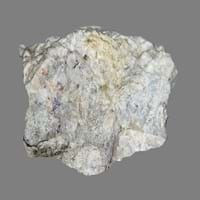Definition
Obsidian is a naturally occurring volcanic glass formed as an extrusive igneous rock. It is produced when felsic lava extruded from a volcano cools rapidly with minimum crystal growth
Skarns are formed during regional or contact metamorphism and from a variety of metasomatic processes involving fluids of magmatic, metamorphic, and/or marine origin
Origin
Ethiopia
USA, Australia
Discoverer
Obsius
Tornebohm
Etymology
From Latin obsidianus, misprint of Obsianus (lapis) (stone) of Obsius
From an old Swedish mining term originally used to describe a type of silicate gangue or waste rock.
Class
Igneous Rocks
Metamorphic Rocks
Sub-Class
Durable Rock, Medium Hardness Rock
Durable Rock, Hard Rock
Group
Volcanic
Not Applicable
Other Categories
Opaque Rock
Fine Grained Rock, Opaque Rock
Texture
Glassy
Earthy, Mud-rich, Rough
Color
Black, Blue, Brown, Green, Orange, Red, Tan, Yellow
Black, Brown, Colourless, Green, Grey, White
Durability
Durable
Durable
Scratch Resistant
Yes
Yes
Interior Uses
Decorative Aggregates, Interior Decoration
Decorative Aggregates, Entryways, Interior Decoration
Exterior Uses
Garden Decoration
As Building Stone, As Facing Stone, Garden Decoration, Paving Stone
Other Architectural Uses
Not Yet Used
Curbing
Construction Industry
Arrowheads, Cutting Tool, Knives, Scrapers, Spear Points
As a Flux in the Production of Steel and Pig Iron, As a Sintering Agent in Steel Industry to process Iron Ore, As Dimension Stone, Gold and Silver production, Manufacture of Magnesium and Dolomite Refractories
Medical Industry
Surgery
Not Applicable
Antiquity Uses
Artifacts, Jewellery
Artifacts, Monuments, Sculpture
Commercial Uses
Creating Artwork, Mirror, Used in aquariums
Creating Artwork, Gemstone, Jewelry, Metallurgical Flux, Source of Magnesia (MgO)
Types
Fireworks Obsidian, Mahogany, Sheen Obsidian, Snowflake obsidian and Velvet Peacock Obsidian
Endoskarns
Features
Blocks negativity, Helps to protect against depression
Host Rock for Lead, Zinc and Copper Deposits
Archaeological Significance
Monuments
Not Yet Used
Used
Famous Monuments
Not Applicable
Data Not Available
Sculpture
Not Yet Used
Used
Famous Sculptures
Not Applicable
Data Not Available
Pictographs
Used
Not Used
Petroglyphs
Used
Not Used
Figurines
Not Yet Used
Used
Formation
When the lava is released from volcano, it undergoes a very rapid cooling which freezes the mechanisms of crystallization. The result is a volcanic glass with a uniform smooth texture.
Due to change in environmental conditions, rocks are heated and pressurized deep inside the Earth's surface. Skarn is formed from the extreme heat caused by magma or by the intense collisions and friction of tectonic plates.
Mineral Content
Not Available
Calcite, Enstatite, Epidote, Garnet, Magnetite, Pyroxene, Titanite
Compound Content
Aluminium Oxide, CaO, Iron(III) Oxide, FeO, Potassium Oxide, MgO, MnO, Sodium Oxide, Phosphorus Pentoxide, Silicon Dioxide, Titanium Dioxide
Au, CaO, Carbon Dioxide, Cu, Fe, MgO
Types of Metamorphism
Burial Metamorphism, Cataclastic Metamorphism, Contact Metamorphism
Burial Metamorphism, Cataclastic Metamorphism, Contact Metamorphism, Hydrothermal Metamorphism, Impact Metamorphism, Regional Metamorphism
Types of Weathering
Biological Weathering, Chemical Weathering, Mechanical Weathering
Not Applicable
Types of Erosion
Chemical Erosion, Coastal Erosion, Glacier Erosion
Not Applicable
Grain Size
Not Applicable
Fine Grained
Fracture
Conchoidal
Irregular
Streak
White
Light to dark brown
Porosity
Very Less Porous
Less Porous
Luster
Vitreous
Waxy and Dull
Compressive Strength
Not Available
Cleavage
Non-Existent
Slaty
Toughness
Not Available
2.4
Specific Gravity
2.6-2.7
2.86
Transparency
Translucent
Opaque
Density
2.6 g/cm3
2.8-2.9 g/cm3
Resistance
Heat Resistant, Impact Resistant
Heat Resistant
Deposits in Eastern Continents
Asia
Afghanistan, Indonesia, Japan, Russia
China, India, Russia, Saudi Arabia, South Korea, Sri Lanka
Africa
Kenya
South Africa, Western Africa
Europe
Greece, Hungary, Iceland, Italy, Turkey
United Kingdom
Others
Not Yet Found
Not Yet Found
Deposits in Western Continents
North America
Canada, Mexico, USA
Canada
South America
Argentina, Chile, Ecuador, Peru
Brazil, Colombia, Paraguay
Deposits in Oceania Continent
Australia
New Zealand
Central Australia, Western Australia
All about Obsidian and Skarn Properties
Know all about Obsidian and Skarn properties here. All properties of rocks are important as they define the type of rock and its application. Obsidian belongs to Igneous Rocks while Skarn belongs to Metamorphic Rocks.Texture of Obsidian is Glassy whereas that of Skarn is Earthy, Mud-rich, Rough. Obsidian appears Shiny and Skarn appears Dull. The luster of Obsidian is vitreous while that of Skarn is waxy and dull. Obsidian is available in black, blue, brown, green, orange, red, tan, yellow colors whereas Skarn is available in black, brown, colourless, green, grey, white colors. The commercial uses of Obsidian are creating artwork, mirror, used in aquariums and that of Skarn are creating artwork, gemstone, jewelry, metallurgical flux, source of magnesia (mgo).










